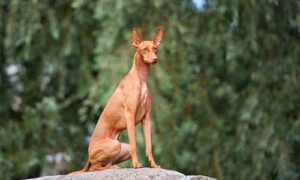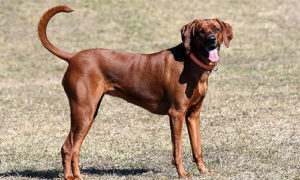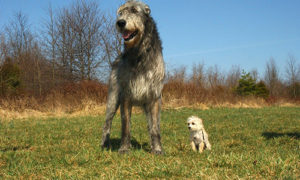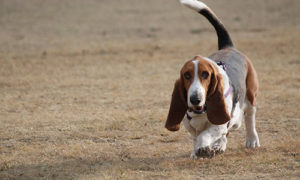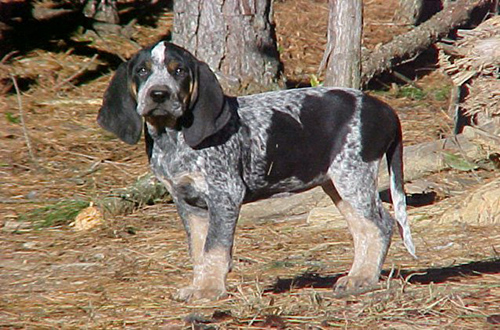
The Bluetick Coonhound and the American English Coonhound share a similar history. These dog’s ancestors comprised of English hunting hounds that got to America during the 17th and 18th centuries. In fact, some believe that George Washington was among the earliest breeders of these dogs. He mixed English foxhounds with French hounds. Continued crosses to the slow-trailing but stanch French Grand Bleu de Gascogne resulted in larger dogs with black ticking and a slower hunting style with better ability to follow old or cold scent trails.
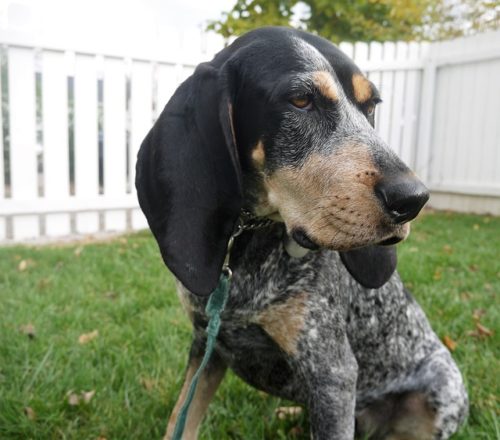
This breed can trace its creation to the bayous of Louisiana and the Ozarks of Tennessee. Breed historians initially considered these dogs a subtype of the English Coonhound, which the UKC recognized in 1905. As the fondness for the English Coonhound began to favor quicker, hot-nosed dogs, breeders of the blue-ticked ones pulled away from them, with the UKC granting separate breed status in 1945.
Breed aficionados recognized the Bluetick as a regular member of the AKC Hound Group in 2009. Over the years, these dogs have continued to be a favorite amongst hunters; they have a reputation for staying on the toughest and most confusing trails and an uncanny persistence when treeing. When treeing, the Bluetick possesses a strong bawl. Do not let the name fool you; this breed is also proficient at hunting wild boar, mountain lion, bear, and opossum.
Bluetick Coonhound Breed Facts
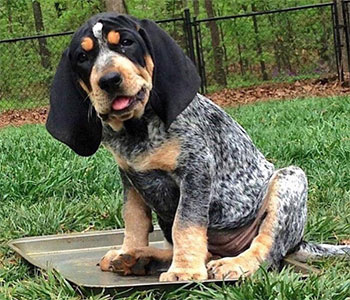
Temperament: The Bluetick Coonhound is friendly, independent, strong-willed, and adventurous. However, it is mostly a laid-back but not overly compliant companion. Also, we know these dogs to be ardent counter surfers and escape artists; they’ll follow their nose to food or prey; Don’t feel bad if they fake being deaf and ignore commands to stop. They’re friendly to all thanks to their easy-going nature. They enjoy the company of strangers, other dogs, and other pets. They’re also capable watchdogs, and they love barking loudly whenever excited.
Upkeep: The Bluetick Coonhound is a hunter at heart. In fact, it is happiest in the woods following a trail that’s challenging. If possible, all Blueticks should have the chance to follow scent trails and experience new smells daily.
These dogs are not the fastest runners, but they’re bred for endurance; therefore, they demand a jog or a long walk daily. These dogs are relatively serene indoors as long as they get their daily exercise. Keep food out of reach. Their coats are not high maintenance; therefore, occasional brushing is enough.
- Popularity: Not common
- Family: Scenthound
- Origin: United States
- Date Developed: 1800s
- Past Function: Trailing and hunting raccoon and other animals
- Current Function: Trailing and hunting raccoon and other animals, night hunts, and companionship
- Other Names: None
- Life Expectancy: 11 to 13 years
- Weight: Male: 55–80 pounds; Female: 45–65 pounds
- Height: Male: 22–27 inches; Female: 21–25 inches
Color: The Bluetick Coonhound is blue with black spots on back, ears, and sides (predominately black head and ears) with or without tan markings and red ticking on legs and feet
Group: Hound Group
Health Problems: CHD, ear infections, and lysosomal storage disease
Characteristics
A healthy Bluetick Coonhound should appear to be a fast and well-muscled hound. In fact, the Bluetick is more strongly built than other Coonhounds, but it should never be awkward nor exceedingly chunky in build.
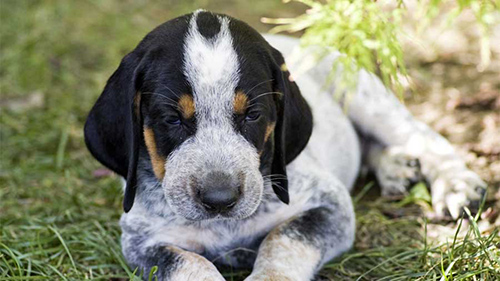
Also, the Bluetick Coonhound’s legs are moderately angulated and well-muscled, which allows for good speed, agility, and endurance. Their wide nostrils are perfect for allowing air and smells in, and their deep muzzle allows for more scenting receptors.
The Bluetick Coonhound has a coat that is short and medium coarse, which helps provide protection from prickly vines and shrubs. When in motion, the Bluetick carries its head and tail up. It possesses a distinctive loud howl, which allows hunters to locate the dog from long distances and at night.


